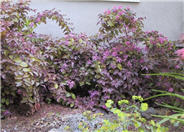
Common name:Sago-Palm
Botanical name:Cycas revoluta
Sago Palm resembles small palms; it is evergreen. It can slowly grow to 10'. It is used for a tropical effect and also looks great in planters. In the low desert, light shade and additional moisture are best. Side sprouts can form multi-trunked individuals. Apply fertilizer at leaf expansion. This plant has few pests.

Common name:New Zealand Flax
Botanical name:Phormium tenax
New Zealand Flax is a large, bold plant with stiffly vertical, sword-like, green leaves that arise from its base. It should be grown under full sun for best color. Varieties will offer different growth habits and leaf color.

Common name:Mediterranean Fan Palm
Botanical name:Chamaerops humilis
Slow growing but very hardy. Clump forming with rich green foliage. Grows to 20'. Can be used as a good container subject. Full sun or partial shade, Native of Mediterranean, Europe and N. Africa. The only European native palm. Petioles have sharp
spines.

Common name:Southwest Coral Bells
Botanical name:Heuchera sanguinea
Tufts of round leaves 2"-3" wide with scalloped edges accent this plant. It also produces wiry stems to 24" tall with open clusters of red-pink, bell-shaped flowers.

Common name:Boston Ivy
Botanical name:Parthenocissus tricuspidata
This semi-evergreen vine has dark green leaves that are usually lobed and divided into 3 leaflets. It clings tightly to any surface; it looks great on brick walls. In fall, leaves turn orange or red. Flowers are inconspicuous. During fall, small blue black berries appear to the delight of birds. This vine can grow 50'-60' long but it really depends on what it is growing on. This vine is aggressive.

Common name:Red Fringe Flower cultivar
Botanical name:Loropetalum chinense v. rubrum
Red Fringe Flower is a shrub that grows 6'-12' tall and wide. It has arching branches with light green and reddish leaves. Pink flowers bloom intermittently throughout the year. This attractive shrub prefers afternoon shade and shelter from hot, drying winds. It needs a moderate amount of watering.
More than half of the water used at your home is for outside purposes. Studies show that on average, half of the water used outdoors is wasted. The leading cause of waste is incorrectly set and poorly managed irrigation controllers. The second biggest cause of wastage is broken irrigation equipment that goes undetected. There are a few basic things you can do to make a big difference in your water use.
Click in the green box for more information
Designer:
Photographer: GardenSoft
Practice grass-cycling by leaving short grass clippings on lawns after mowing, so that nutrients and organic matter are returned to the soil.
Drip and other smart irrigation delivers water directly to roots, allowing no excess water for weeds.